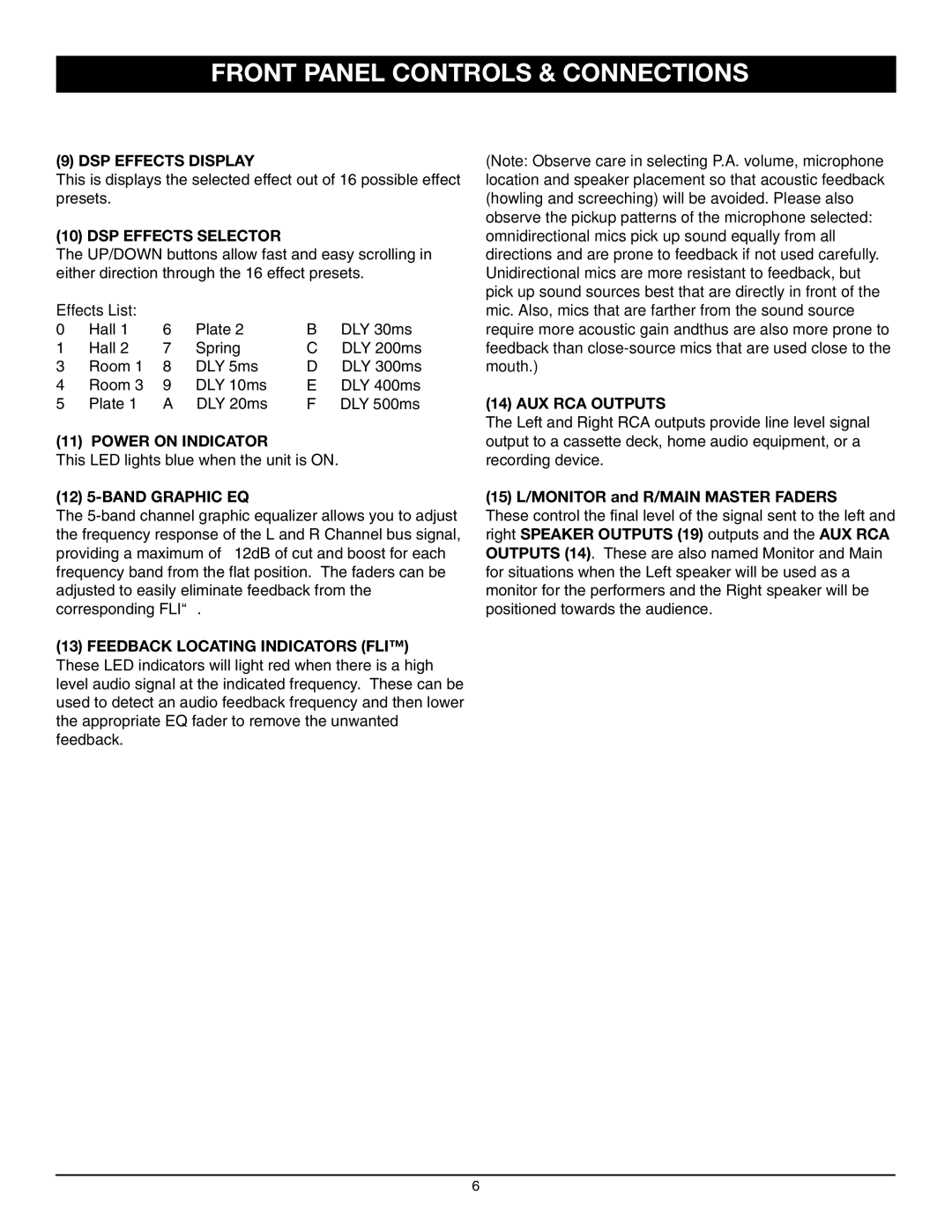
FRONT PANEL CONTROLS & CONNECTIONS
(9) DSP EFFECTS DISPLAY
This is displays the selected effect out of 16 possible effect presets.
(10) DSP EFFECTS SELECTOR
The UP/DOWN buttons allow fast and easy scrolling in either direction through the 16 effect presets.
Effects List: |
|
|
| |
0 | — Hall 1 | 6 | — Plate 2 | B — DLY 30ms |
1 | — Hall 2 | 7 | — Spring | C — DLY 200ms |
3 | — Room 1 | 8 | — DLY 5ms | D — DLY 300ms |
4 | — Room 3 | 9 | — DLY 10ms | E — DLY 400ms |
5 | — Plate 1 | A — DLY 20ms | F — DLY 500ms | |
(11) POWER ON INDICATOR
This LED lights blue when the unit is ON.
(12) 5-BAND GRAPHIC EQ
The
(13)FEEDBACK LOCATING INDICATORS (FLI™)
These LED indicators will light red when there is a high level audio signal at the indicated frequency. These can be used to detect an audio feedback frequency and then lower the appropriate EQ fader to remove the unwanted feedback.
(Note: Observe care in selecting P.A. volume, microphone location and speaker placement so that acoustic feedback (howling and screeching) will be avoided. Please also observe the pickup patterns of the microphone selected: omnidirectional mics pick up sound equally from all directions and are prone to feedback if not used carefully. Unidirectional mics are more resistant to feedback, but pick up sound sources best that are directly in front of the mic. Also, mics that are farther from the sound source require more acoustic gain andthus are also more prone to feedback than
(14) AUX RCA OUTPUTS
The Left and Right RCA outputs provide line level signal output to a cassette deck, home audio equipment, or a recording device.
(15) L/MONITOR and R/MAIN MASTER FADERS
These control the final level of the signal sent to the left and right SPEAKER OUTPUTS (19) outputs and the AUX RCA OUTPUTS (14). These are also named Monitor and Main for situations when the Left speaker will be used as a monitor for the performers and the Right speaker will be positioned towards the audience.
6
